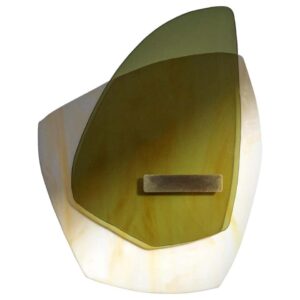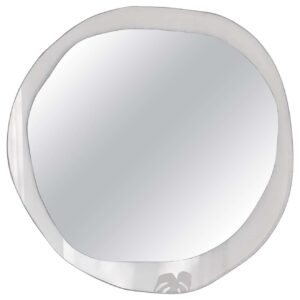
Marianna Fiorin

Growing up in northern Italy as the daughter of a woodworker in a third-generation mill working family, Marianna has been playing with wooden samples her whole life. Her family’s company supplies high quality mill work all over the world for 50 years. After obtaining her Master degree in Architecture in Venice, she started to work for her family company designing the interiors. Her enthusiasm for the architecture world was too big so she decided to explore working for architecture firms outside. In this time frame, she worked on international projects like the New Doha International Airport (Qatar) by Antonio Citterio and Patricial Viel and the Radisson Blu Hotel in Nairobi, Kenya.
In 2014 she decided to try to realize her big dream and moved to New York City with the purpose to be an interior architect and to help her family’s business. In New York, she specialized in high end interior architecture. She’s currently working on residential and commercial projects in New York City, Long Island, Jerusalem, and Los Angeles.
Every space she designs has its own character. She believes the location and its contest is fundamental when working on the interior design. So she creates emotional spaces where the materials and the light are the protagonists. She prefer simplicity and natural materials over decoration, and is still interested in exploring the possibilities that technology offers. She likes to keep soft tones as a base and then play with art pieces, marble and special fixtures, creating timeless eclectic interior spaces.
1.Could you tell us your first memory related to design? How did your interior design journey start in Northern Italy, where you were born?
My passion for design blossomed when I was a little child, as I set at my father’s desk in our family’s third-generation mill work factory near Venice, Italy. Seated at his desk, I’d immerse myself in sketching on checkered notebooks, inspired by the craftsmanship surrounding me. Amidst the shelves, Architectural Digest magazines became my portals to boundless creativity, igniting my love for design.
2. Has there been a defining moment in your career? Could you tell us about it?
Among several moments, one stands out, altering not just my career but the trajectory of my entire life. It unfolded with a touch of magic, amidst the grief of losing my beloved grandmother Anna, my best friend. Struggling with sorrow, I turned to her in prayer, pleading for guidance to fulfill my dream of relocating to New York.
One day later, a job offer materialized, and within a month, I boarded a plane to the city that would become my new home. I felt like it was the most natural step, and I have felt that way since then.
3. You have moved to New York City before you began working as an interior designer. How do you think the city affects your creative process? And how do you get inspired in general?
My background in Italy is architecture, I am an architect with a master’s of restoration of historical buildings. After working on some architectural projects, I had started working on interior projects while in Italy, but on commercial spaces and not residential.
Once I arrived in NY, my ex-boss assigned me my first residential project. Being here, exposed to this mix of styles, culture, and seeing unique interiors, open up my vision, and with that also my heart and passion.
My inspiration comes from the city, as it really is in every corner of it, not only in the buildings, but also in the people that inhabit it and that come from every angle of the world. However, the best inspiration comes from traveling. Nothing is like traveling to discover new ideas. And also design shows and art galleries, like yours, are always a good source of inspiration.
4. Can you tell us about one of the favorite projects that you worked on?
It is hard to pick a favorite. However, one of the most recent ones, in Battery Park, was a very special one, where the clients let our team play with fun shapes, art pieces, and colors. We stepped out of our comfort zone. Another fun project is the house of a musician and his family in Greenpoint which we did together with the architecture firm when I used to work when I moved to NY. We should take pictures soon and I cannot wait.
5. What do you think is the key to a successful interior design project?
I think the balance between aesthetics and comfort is key. Also, the use of some design and art elements that are recognizable and make the project unique.
6. What is one of the hardest-learned lessons in your practice?
At the beginning of my career I found myself in situations where I felt betrayed and used, as I didn’t have experience or a portfolio, so some clients were coming to me as I was a young designer only to execute their ideas. That didn’t feel right to me and I felt sad at the time, as I did have a lot to express.
With time I learned to be more self-confident while coming also to understand that people’s reactions to design proposals can vary. Sometimes they’re immediately drawn to an idea, while other times they’re hesitant or even resistant. It’s not personal, rather, it’s a reflection of the subjective nature of art and design.
A good designer knows the importance of listening to clients, understanding their needs, and remaining flexible in their approach. Authenticity and self-respect are always fundamental, as is maintaining a respectful attitude towards others throughout the creative process.



7. Could you describe a typical day of your work?
There is not a typical day as some days I spend more time in the office, others I am around construction sites, others I am sourcing pieces for our projects, visiting showrooms, art galleries, marble yards, or meeting with clients. I can really tell there is not a standard day, which is also a reason why I love design.
8. Which interior designers, artists or creatives have influenced or inspired you?
Some of my favorite designers are Julie Hillman, Joseph Dirand, Kelly Wearstler, Jeremiah Brent. Artists and creatives Dimore Milano, Elsa Foulon.
9. What advice would you give to beginner designers?
Take lots of notes, save inspirations that you like, but most importantly listen to your clients’ words.
10. What are your 3 favorite pieces from the Philia Collection?




